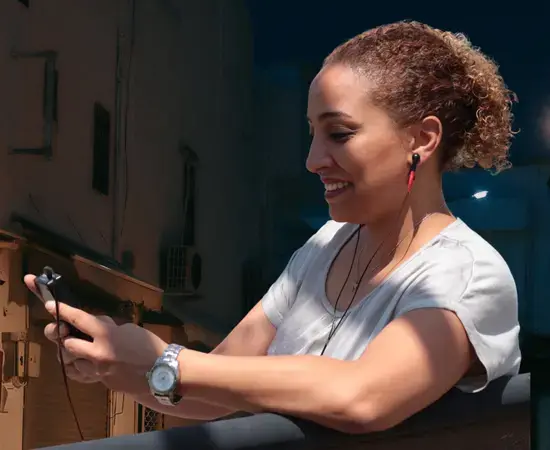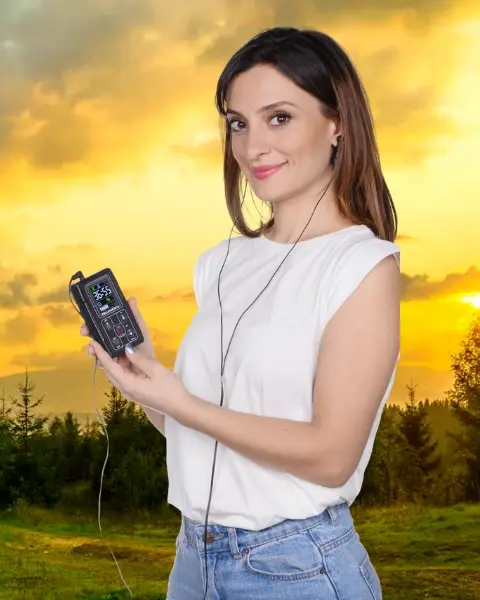Depressive Disorders
Depressive Disorders include disruptive mood dysregulation disorder, major depressive disorder (including major depressive episode), persistent depressive disorder (dysthymia), premenstrual dysphoric disorder, substance/medication-induced depressive disorder, depressive disorder due to another medical condition, other specified depressive disorder, and unspecified depressive disorder.
The common feature of all of these disorders is the presence of sad, empty, or irritable mood, accompanied by somatic and cognitive changes that significantly affect the individual's capacity to function. What differs among them are issues of duration, timing, or presumed etiology (DSM-5).

Major Depressive Disorder (MDD)
This disorder is characterized by intense and persistent sadness, loss of interest or pleasure, fatigue, sleep disturbances, and, in some cases, suicidal thoughts. It has a significant impact on daily functioning and can become chronic if left untreated. NeuroCes™ helps restore the electrical balance in brain regions involved in mood regulation, reduces the stress response, and supports mental recovery. The method is non-invasive and drug-free, providing a therapeutic option for the treatment of symptoms of major depressive disorder.
Persistent Depressive Disorder (Dysthymia)
A chronic form of depression that is less severe than major depression but lasts for at least two years. The individual often feels sad, tired, and unmotivated most of the time. This condition is sometimes mistaken for a personality trait, leading to delayed treatment. With regular use, NeuroCes™ activates the relaxation response of the nervous system, helps stabilize mood fluctuations, and may reduce the effects of mild chronic depression.
Improvement Range for Depression
So far, at least 18 scientific studies have been published on depression, with an average improvement of 47% reported. The improvement found in various studies has ranged from 25% to 80% (Smith, 2007).
25% – 80%
NeuroCes™ & Depression
NeuroCes™ regulates the reduced activity in brain regions associated with depression and restores balance in neuronal communication. It stimulates neurochemical processes that improve mood, supporting greater energy, motivation, and emotional stability. In addition, NeuroCes™ increases alpha and theta brain waves in the frontal cortex, helping to reduce mental blocks and restore inner vitality.




I feel stronger and free

I wanted to stop taking the medication I had been using for depression, but it didn’t seem possible. After trying the NeuroCes™ device, I began to feel more balanced within just a few weeks. Now, together with my doctor, I’m gradually reducing my medication, and I feel much stronger and freer. This device is truly a miracle!

Markus – Munich
For the treatment of depression, it is recommended to use the NeuroCes™ device twice a day until symptoms decrease or completely disappear.
The treatment period should last for at least 3 weeks and ideally be continued for up to 6 months.
The duration of each session should be adjusted according to the intensity level you find comfortable - 20, 40, or 60 minutes.
Even after symptoms have improved, it is advised to continue using the device for at least 4 additional weeks to prevent relapse and to fully support recovery.
When using NeuroCes™, the first positive effects in the treatment of depression usually appear from the second week onward.
However, regular use for at least 3 weeks is necessary to achieve a clear reduction in symptoms.
The full therapeutic effect is reached in most users between 4 and 6 weeks.
Since response time varies from person to person, it is important to be patient and continue the treatment without interruption.
Yes, the NeuroCes™ device can be used as a drug-free alternative treatment for depression.
It works based on Cranial Electrotherapy Stimulation (CES), which helps regulate brain activity and produces therapeutic effects on mood.
For mild to moderate depression, the device can be effective on its own, while in more severe cases, it may be combined with pharmacological therapy under medical supervision.
In all cases, it is recommended to consult your physician according to your personal health condition.
Yes, NeuroCes™ is marketed in the European Union as a medical device that does not require a prescription.
It can therefore be purchased and used freely without the need for a medical prescription.There are no contraindications for using NeuroCes™ in combination with medication.
The device’s stimulation signal does not interfere with pharmacological treatments.
When you experience sustained symptom relief, you may discuss with your doctor whether it is possible to reduce your dosage or gradually discontinue medication.
In the United States, numerous university-supported studies have demonstrated that Cranial Electrotherapy Stimulation (CES) technology is more effective than antidepressants in the treatment of depression. According to meta-analysis data, CES is an effective therapeutic option, both as a standalone treatment and as an adjunct to pharmacological therapies for mild to moderate depression. Furthermore, the therapeutic effect of CES compared with placebo is three times greater than that of medication.
Source : Gilula & Kirsch, 2005 – Cranial Electrotherapy Stimulation: A Safer Alternative to Psychopharmaceuticals in the Treatment of Depression
REFERENCES:
(Smith, 2007). Ray B. Smith, Ph. D. Cranial Electrotherapy Stimulation: It’s First Fifty Years, Plus Three: A Monograph. ISBN: 978-1-60247-589-2 & Cranial Electrotherapy Stimulation Lecture.
(DSM-5). American Psychiatric Association. Diagnostic and statistical manual of mental disorders: DSM-5. - 5th ed.

